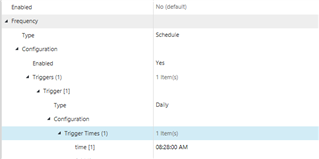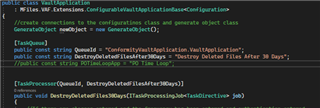Hello,
I don't have any issues making my task run and performing actions but I am wondering how I can hide the dashboard created(or not create the dashboard) if something like "Enabled" in my configuration is set to No:

See:

I have my TaskQueue and TaskProcessor:

I just don't want to show the dashboard if enabled = No. Not sure where to hide or perhaps not stop the creation based on that configuration attribute.
Thanks,
Mitch



